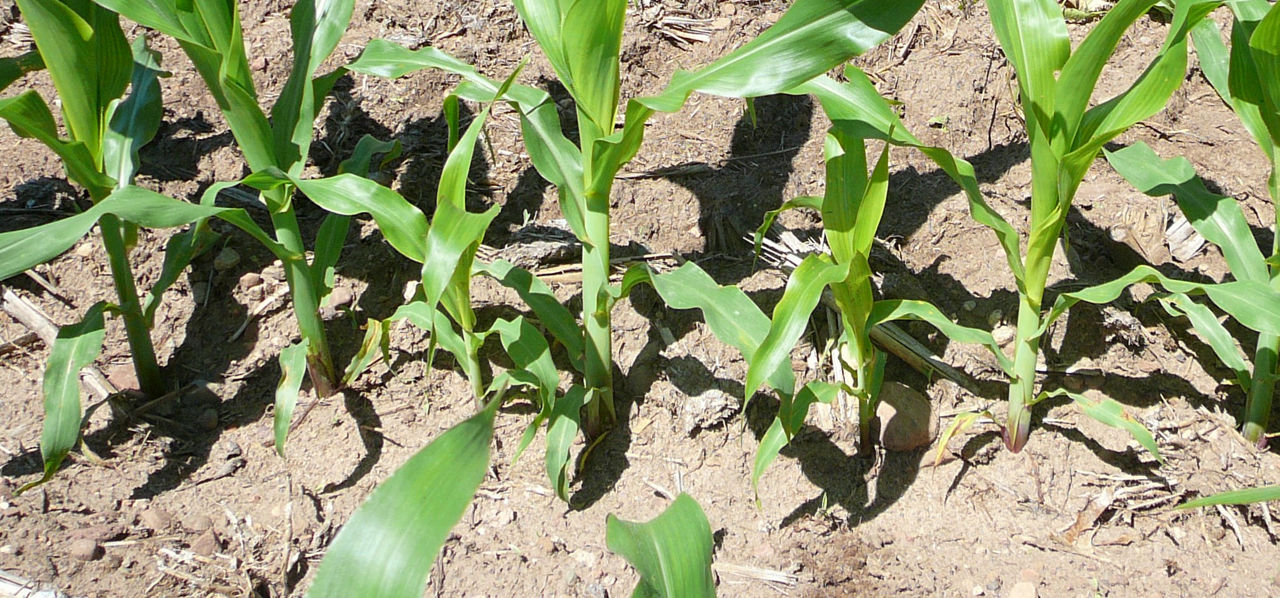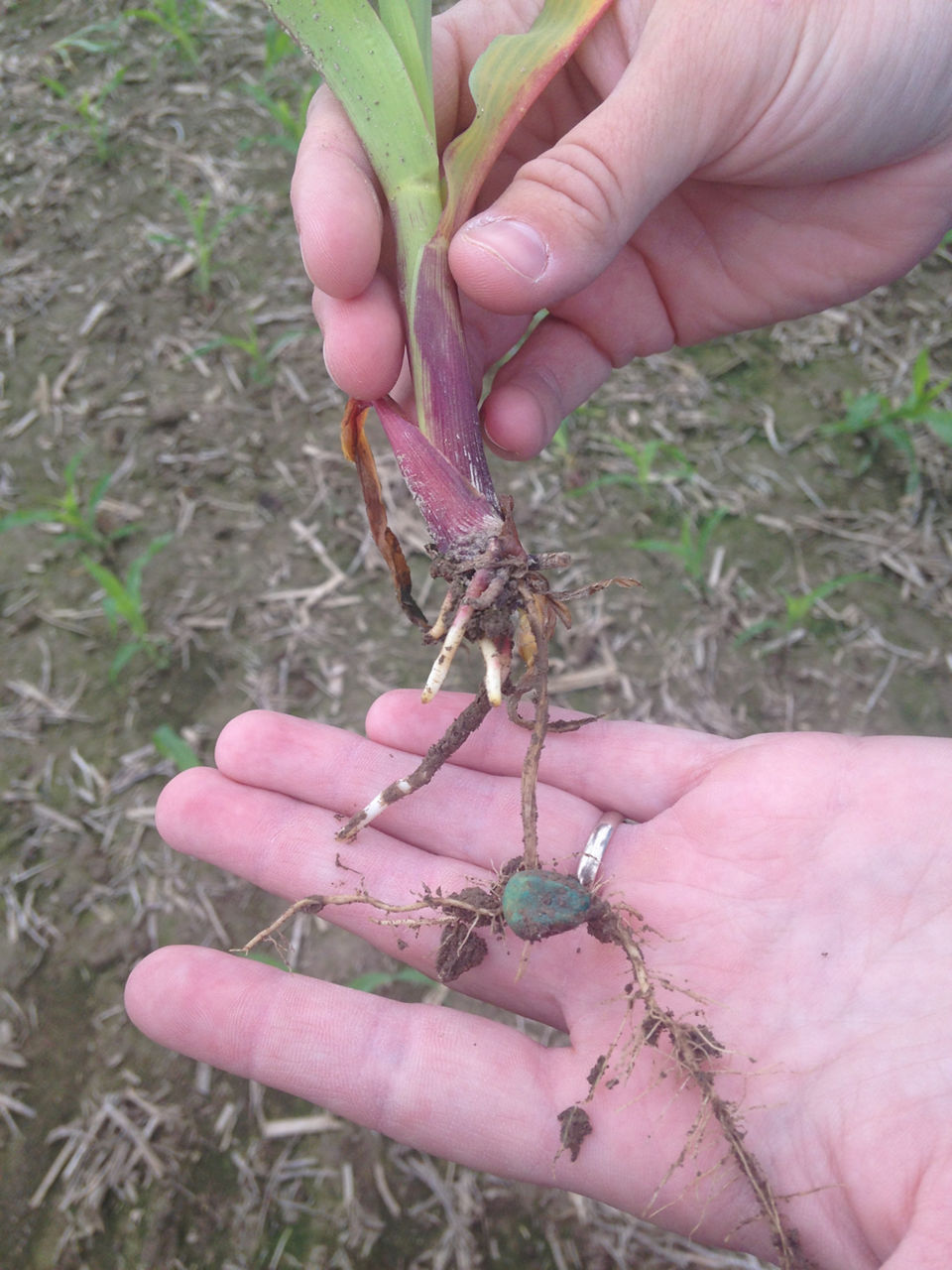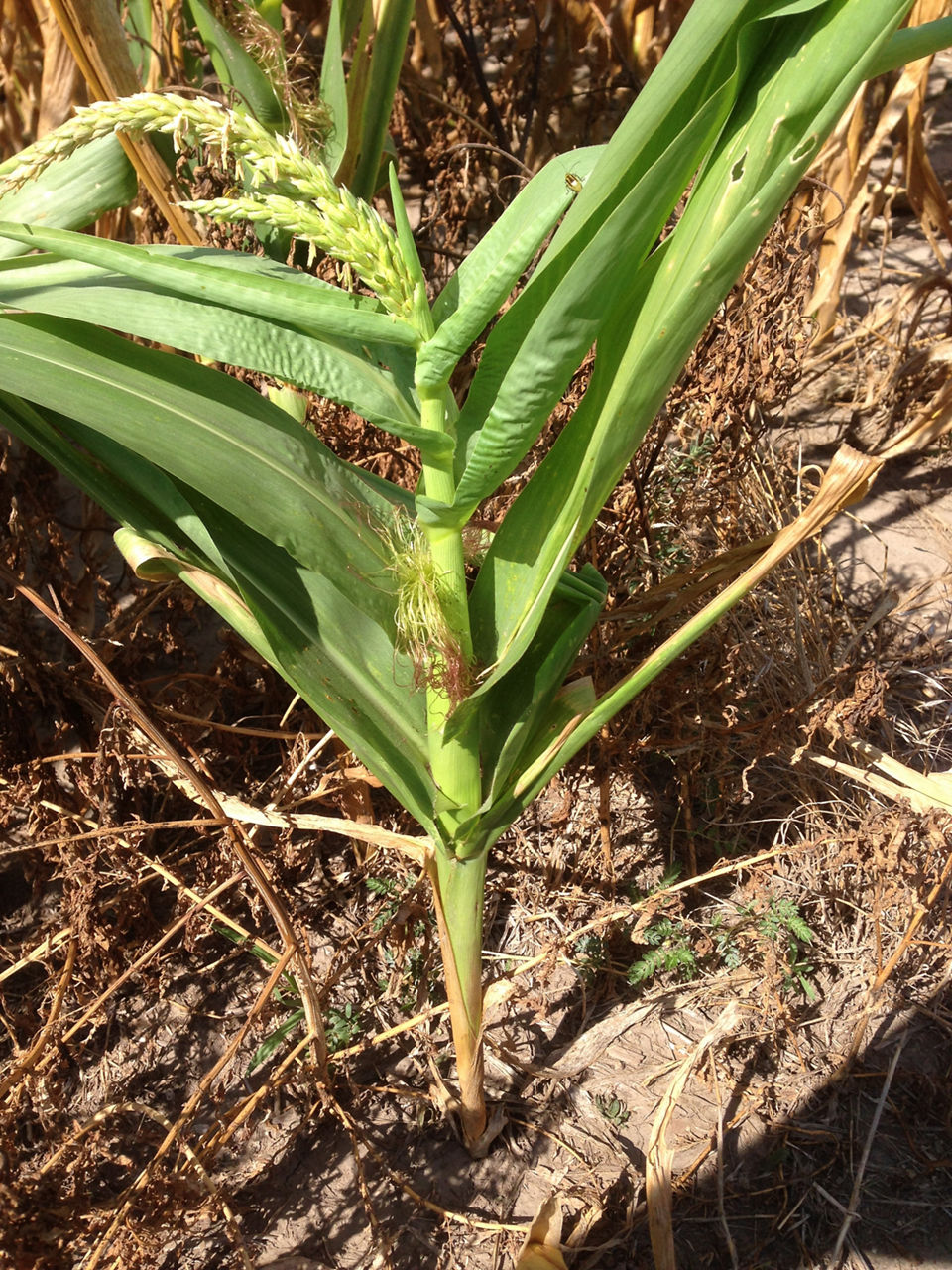5 MIN READ
Early-season Drought Stress in Corn
January 5, 2024
While the greatest need for water in corn occurs during the later vegetative stages, early season drought stress can affect corn in ways that last the entire year. Drought conditions early on can hamper emergence, causing uneven stands, and can negatively impact ear length, overall leaf area, root growth, and root development.
Impact on Germination1
At planting, dry conditions within the seed zone can lead to uneven germination and emergence across the field. This is particularly true when the seeding depth is variable, and some seeds are planted in areas with inadequate moisture. Corn seeds must absorb about twice their weight in water to initiate the germination process, so seeds exposed to different moisture levels will have different germination times. Drastic differences in emergence can lead to late-emerging seedlings essentially becoming weeds, plants that will be outcompeted for resources to the extent that their yield contribution is significantly reduced (Figure 1). Inspecting the soil condition at seed depth is important in dry conditions. Sometimes you may have to plant deeper than you intended to so that the seed is place in consistent soil moisture.

Impact on Roots2,3
Dry soil and hot air temperatures (above 80 °F, above 26 °C) can raise the soil temperature to a level that kills the developing roots of corn seedlings. At the V3 stage, a corn plant is beginning to switch from relying on resources provided by the seed it grew from to relying on resources provided by its developing leaves and nodal roots, making it very susceptible to root death. Roots killed in this manner take on a “roasted” or burnt appearance. In cases where the entire whorl set of roots is killed, moisture uptake by the nodal system must be delayed until another whorl set becomes established. This may lead to what is referred to as “floppy corn” (Figure 2). As the name implies, the plant is without the anchoring system provided by the nodal roots, forcing it to rely on the strength of the mesocotyl to remain upright. Winds that result in breaking or bending the mesocotyl can then cause the plant to simply flop over.

There is not much that can be done once the plant has lodged. However, there are some steps that can be taken to help prevent floppy corn syndrome. Ensure that the minimum seeding depth is at least 2 (5 cm) to 2.5 inches (6.4 cm). Try to eliminate soil compaction by not tilling fields that are too wet or not planting when soil conditions are not fit. Make sure that the seed slot is completely collapsed at planting, not open (Figure 3).

Impact on Leaves4,5
Early season development, up to the V8 stage, determines the size of the overall plant and the size of each leaf. Drought stress at this critical time period will reduce both plant and leaf size (Figure 4). A small reduction in leaf size will not have a significant impact on yield, but the more that leaf size is reduced the less photosynthetic area that will be available to contribute to yield. Extended drought that results in burned leaves and leaf death can significantly reduce yield potential. A common sight when corn is experiencing drought stress is leaf rolling. Four consecutive days of leaf rolling when corn is in early growth stages through V12 may reduce yield potential by 1% to 3% per day of stress.

Impact on Ear Length and Kernel Row Number4,5,6
Drought stress that occurs between V6 to V8 can impact the number of kernel rows. While this trait is genetically controlled, its expression can be modified by the environment. If the corn product is genetically predisposed to have 18 kernel rows but ends up having less than that, the reduction is most likely due to stress that occurred between the V6 to V8 growth stages. In an ear that has 16 kernel rows around, loss of one kernel row equates to about a 5 bushels loss per acre of yield with an average plant population. Additionally, the number of kernels per row may be established as early as V5 and continues to be environmentally influenced throughout pollination and grain fill. Thus, early season drought stress may reduce both the number of rows and the number of kernels within a row.
Sources
1Nielsen, R.L. 2007. Variable emergence due to variable seedbed moisture. Purdue University Extension. Corny News Network. https://www.agry.purdue.edu/ext/corn/news/articles.07/VariableEmergence-0520.html
2Nielsen, R.L. 2020. Root development in young corn. Purdue University Extension. Corny News Network. https://www.agry.purdue.edu/ext/corn/news/timeless/Roots.html
3Nielsen, R.L. 2022. “Rootless” or “floppy” corn syndrome. Purdue University Extension. Corny News Network. https://www.agry.purdue.edu/ext/corn/news/timeless/floppycorn.html
4Licht, M. and Archontoulis, S. 2017. Influence of drought on corn and soybean. Iowa State University Extension. Integrated Crop Management News. https://crops.extension.iastate.edu/cropnews/2017/07/influence-drought-corn-and-soybean
5Heiniger, R. 2018. The impact of early drought on corn yield. North Carolina State University Extension. https://corn.ces.ncsu.edu/corn-production-information/the-impact-of-early-drought-on-corn-yield/
6Nielsen, R.L. 2023. Ear size determination in corn. Purdue University Extension. Corny News Network. https://www.agry.purdue.edu/ext/corn/news/timeless/EarSize.html
Web sources verified 12/4/2023 1222_66886

Seed Brands & Traits
Crop Protection
Disclaimer
Always read and follow pesticide label directions, insect resistance management requirements (where applicable), and grain marketing and all other stewardship practices.
©2024 Bayer Group. All rights reserved.